Abstract
Simulation experiments were performed to assess the power of the lod method for detecting linkage between a quantitative trait and a qualitative marker. Using family data on the Amy2-Duffy linkage, it was found that linkage detection is feasible in certain limited circumstances. The same qualitative data yielded no evidence for a significant difference in male and female recombination fractions.
Full text
PDF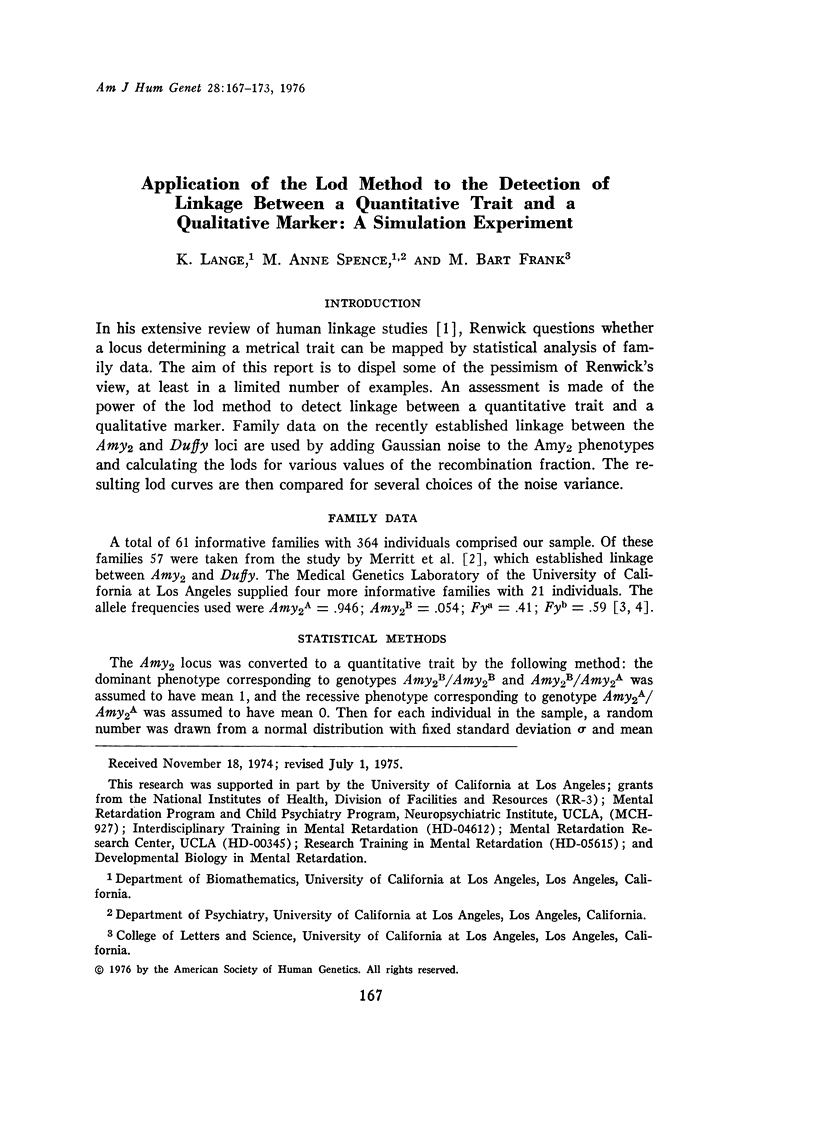
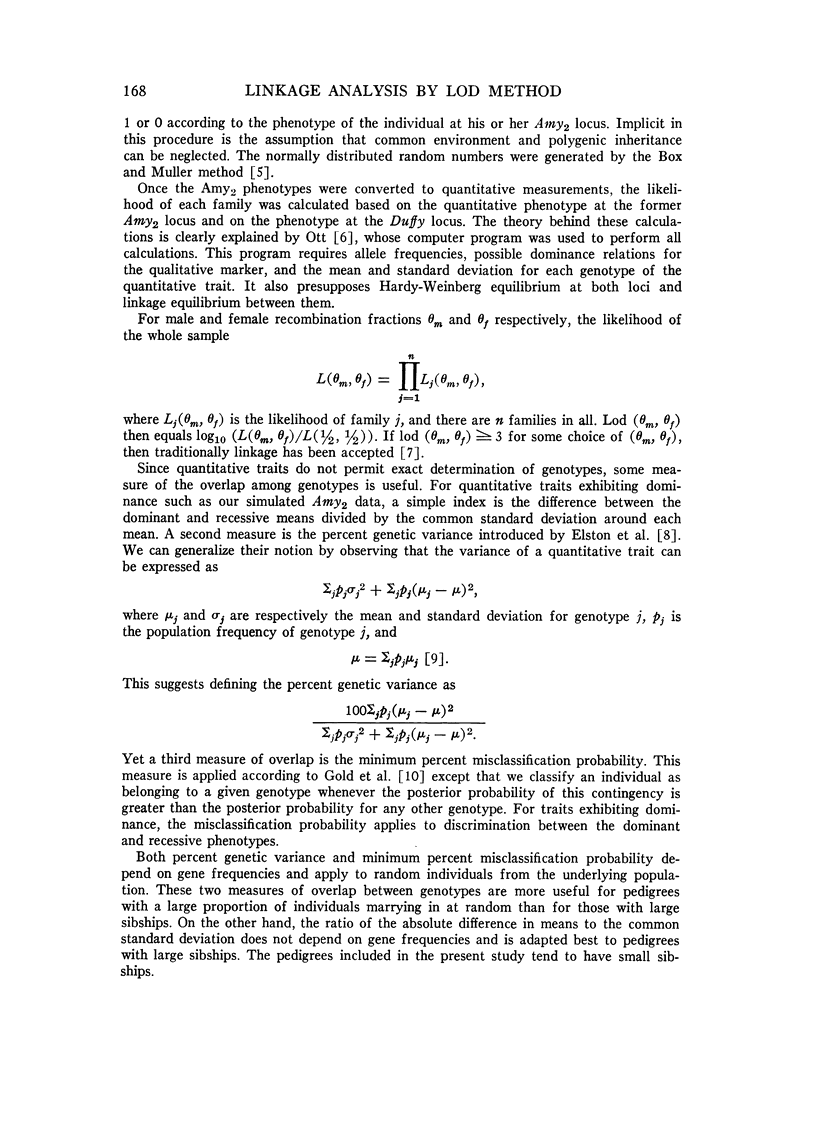
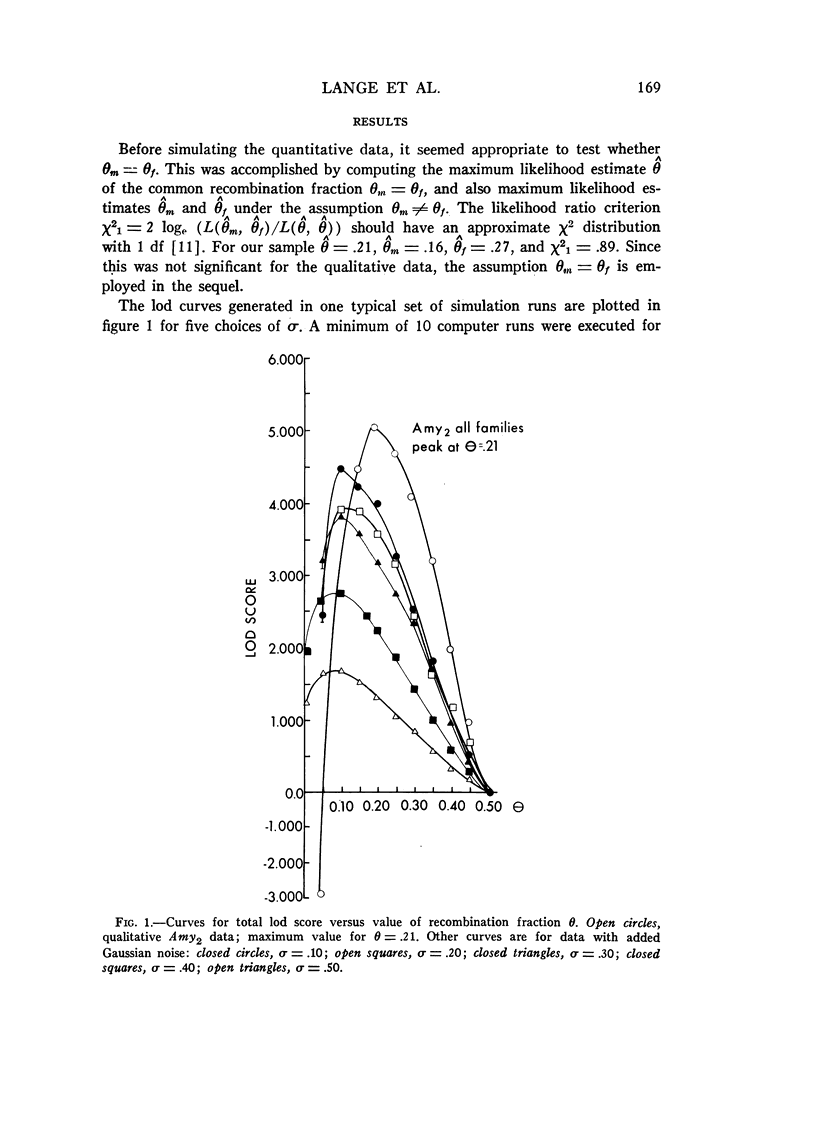
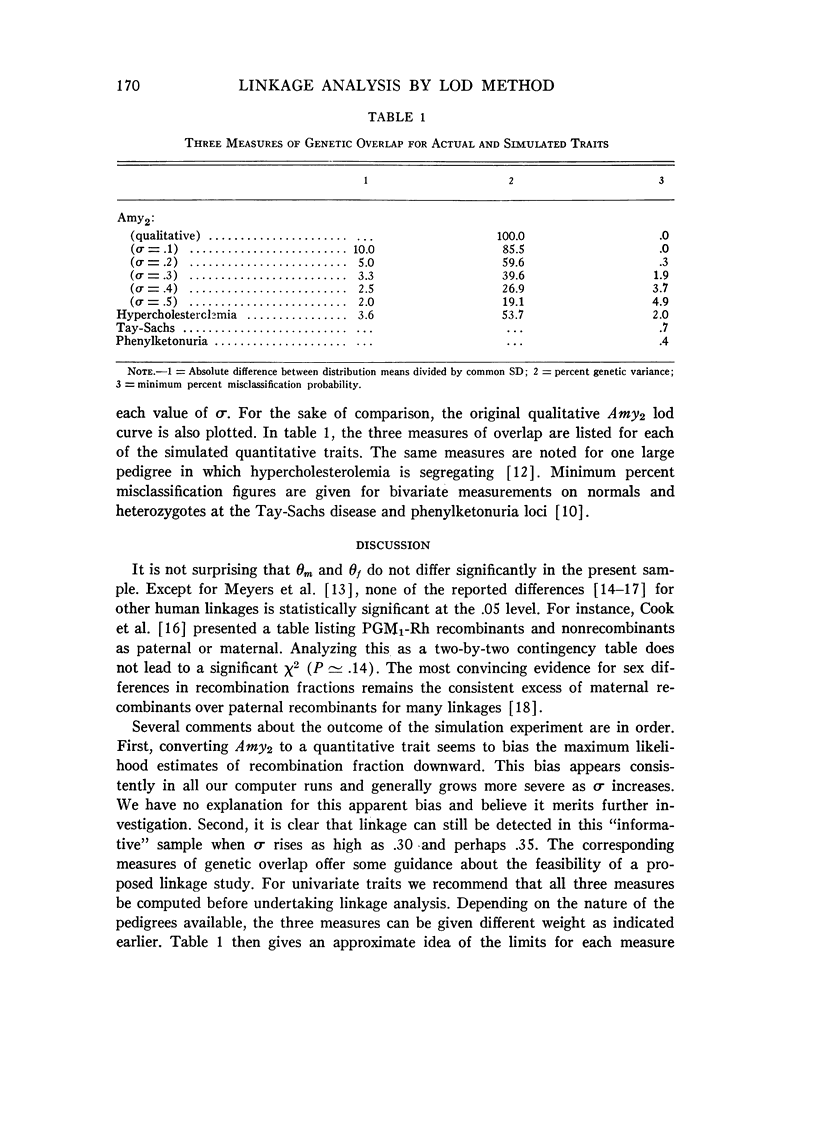
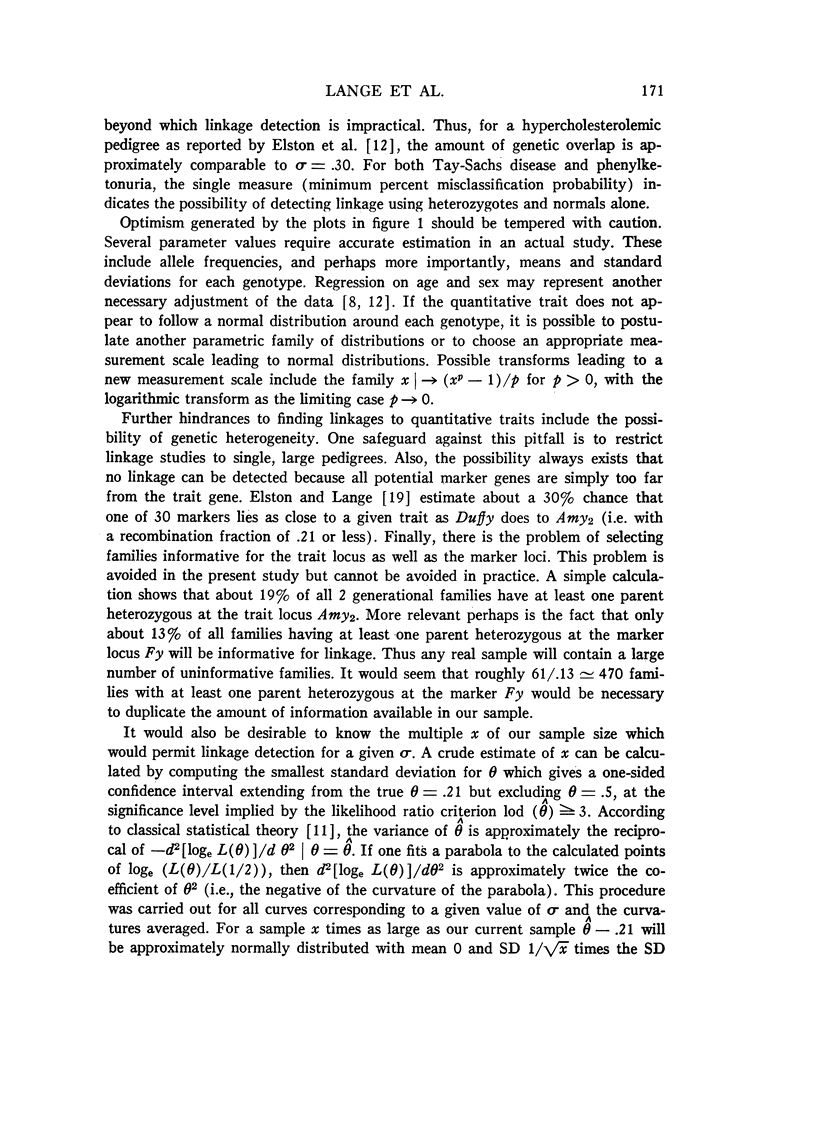
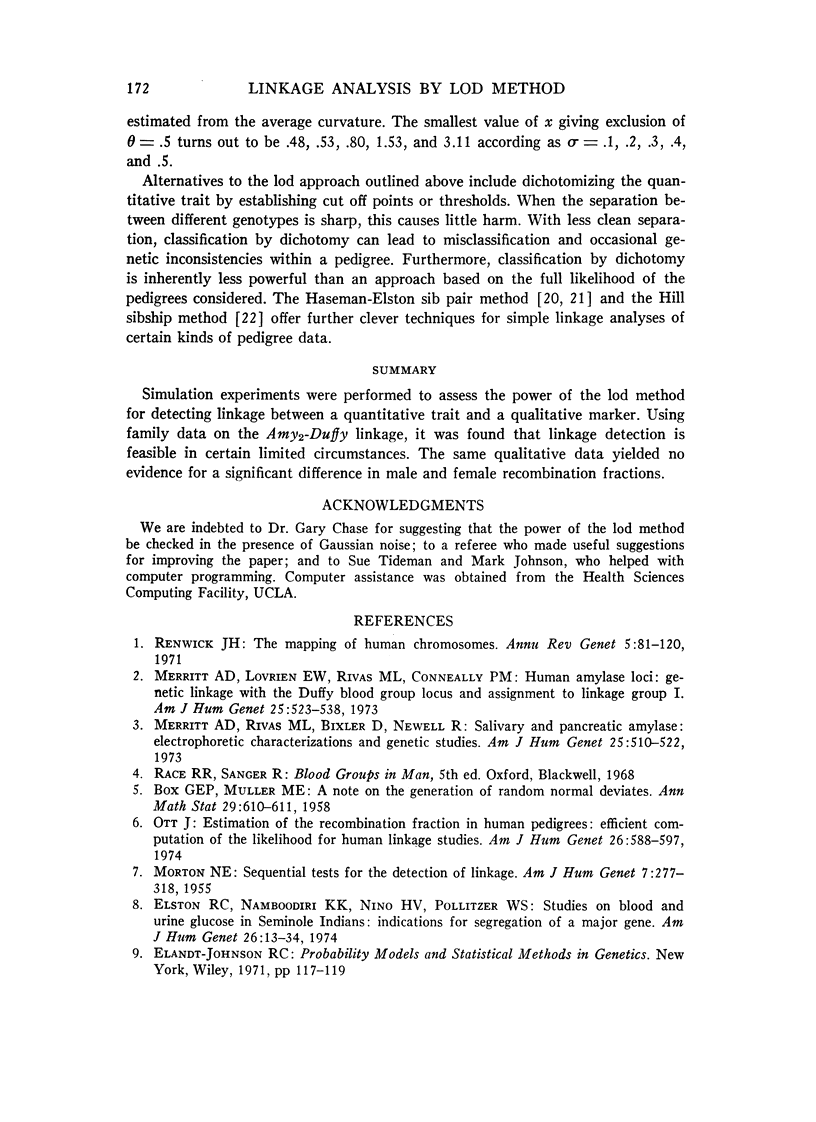
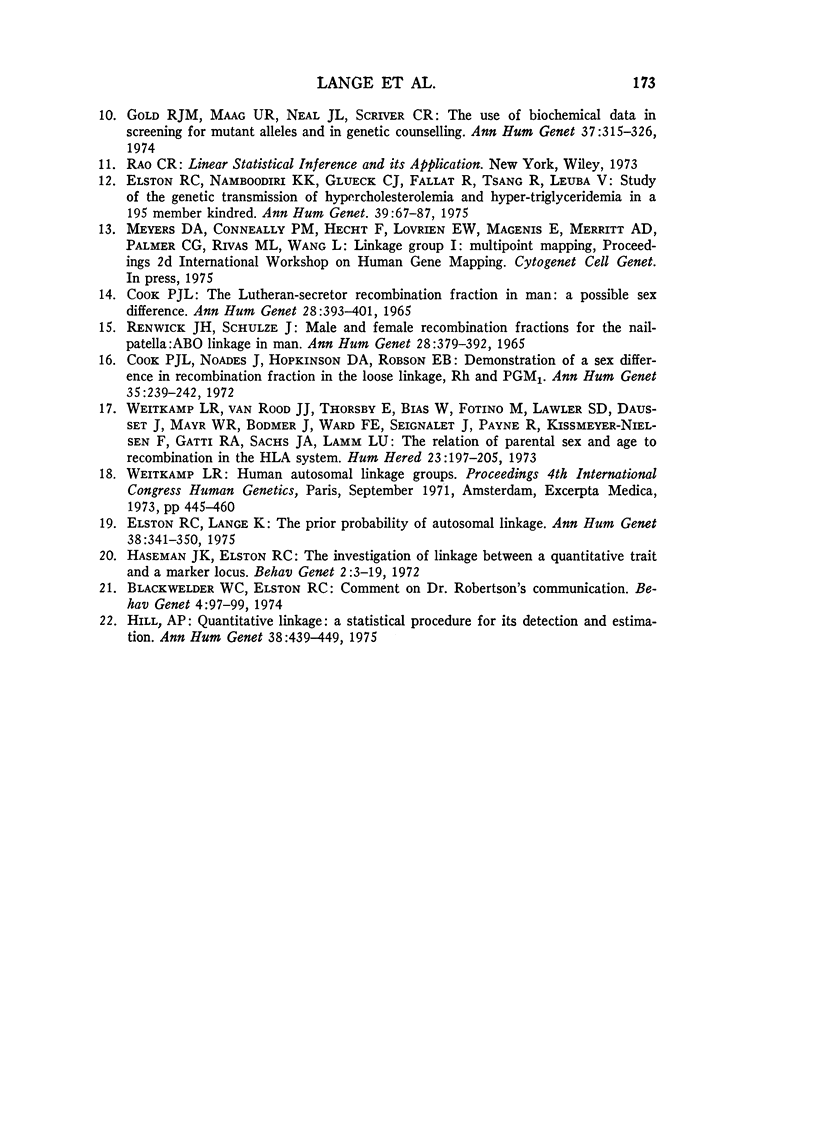
Selected References
These references are in PubMed. This may not be the complete list of references from this article.
- Blackwelder W. C., Elston R. C. Letter: Comment on Dr. Robertson's communication. Behav Genet. 1974 Mar;4(1):97–99. doi: 10.1007/BF01066708. [DOI] [PubMed] [Google Scholar]
- Cook P. J., Noades J., Hopkinson D. A., Robson E. B., Cleghorn T. E. Demonstration of a sex difference in recombination fraction in the loose linkage, Rh and PGM. Ann Hum Genet. 1972 Mar;35(3):239–242. doi: 10.1111/j.1469-1809.1957.tb01397.x. [DOI] [PubMed] [Google Scholar]
- Elston R. C., Lange K. The prior probability of autosomal linkage. Ann Hum Genet. 1975 Jan;38(3):341–350. doi: 10.1111/j.1469-1809.1975.tb00619.x. [DOI] [PubMed] [Google Scholar]
- Elston R. C., Namboodiri K. K., Glueck C. J., Fallat R., Tsang R., Leuba V. Study of the genetic transmission of hypercholesterolemia and hypertriglyceridemia in a 195 member kindred. Ann Hum Genet. 1975 Jul;39(1):67–87. doi: 10.1111/j.1469-1809.1975.tb00109.x. [DOI] [PubMed] [Google Scholar]
- Elston R. C., Namboodiri K. K., Nino H. V., Pollitzer W. S. Studies on blood and urine glucose in Seminole Indians: indications for segregation of a major gene. Am J Hum Genet. 1974 Jan;26(1):13–34. [PMC free article] [PubMed] [Google Scholar]
- Gold R. J., Maag U. R., Neal J. L., Scriver C. R. The use of biochemical data in screening for mutant alleles and in genetic counselling. Ann Hum Genet. 1974 Jan;37(3):315–326. doi: 10.1111/j.1469-1809.1974.tb01838.x. [DOI] [PubMed] [Google Scholar]
- Haseman J. K., Elston R. C. The investigation of linkage between a quantitative trait and a marker locus. Behav Genet. 1972 Mar;2(1):3–19. doi: 10.1007/BF01066731. [DOI] [PubMed] [Google Scholar]
- Hill A. P. Quantitative linkage: a statistical procedure for its detection and estimation. Ann Hum Genet. 1975 May;38(4):439–449. doi: 10.1111/j.1469-1809.1975.tb00633.x. [DOI] [PubMed] [Google Scholar]
- MORTON N. E. Sequential tests for the detection of linkage. Am J Hum Genet. 1955 Sep;7(3):277–318. [PMC free article] [PubMed] [Google Scholar]
- Merritt A. D., Lovrien E. W., Rivas M. L., Conneally P. M. Human amylase loci: genetic linkage with the Duffy blood group locus and assignment to linkage group I. Am J Hum Genet. 1973 Sep;25(5):523–538. [PMC free article] [PubMed] [Google Scholar]
- Merritt A. D., Rivas M. L., Bixler D., Newell R. Salivary and pancreatic amylase: electrophoretic characterizations and genetic studies. Am J Hum Genet. 1973 Sep;25(5):510–522. [PMC free article] [PubMed] [Google Scholar]
- Ott J. Estimation of the recombination fraction in human pedigrees: efficient computation of the likelihood for human linkage studies. Am J Hum Genet. 1974 Sep;26(5):588–597. [PMC free article] [PubMed] [Google Scholar]
- Renwick J. H. The mapping of human chromosomes. Annu Rev Genet. 1971;5:81–120. doi: 10.1146/annurev.ge.05.120171.000501. [DOI] [PubMed] [Google Scholar]
- Weitkamp L. R., Van Rood J. J., Thorsby E., Bias W., Fotino M., Lawler S. D., Dausset J., Mayr W. R., Bodmer J., Ward F. E. The relation of parental sex and age to recombination in the HL-A system. Hum Hered. 1973;23(3):197–205. doi: 10.1159/000152574. [DOI] [PubMed] [Google Scholar]


